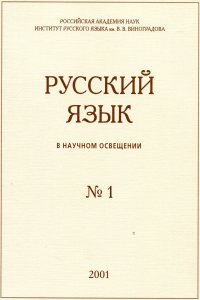Vocalism of the first pretonic syllable in the Mosalsk dialects: history and modernity
Abstract:
The article consists of two parts. The first part examines the history of studying the vocalism of Mosalsk dialects, where four stages can be distinguished: 1) the turn of the 20th century (works by A. A. Shakhmatov, O. Brok, N. N. Durnovo), 2) the mid-20th century (survey of dialects of the Mosalsk district according to the program of the Dialectological Atlas of the Russian Language), 3) the turn of the 21st century (works by A. M. Krasovitsky and L. L. Kasatkin), 4) present day (the expedition of researchers of the Institute of Linguistics and the Institute of Russian Language of the Russian Academy of Sciences, students of the Moscow State University and the Russian State University for the Humanities). The second part discusses the results of the study of the system of pretonic vowels in Mosalsk dialects based on materials from the 2023 expedition. During the expedition, it was noticed that the dissimilative akanye of the Zhizdrinskiy type is preserved among all recorded informants (39 persons), notwithstanding their age or social group: representatives of the older generation and the young, residents of the rural area and of Mosalsk. In contrast to this, yakanye was registered in the speech of only four informants; besides, a relatively consistent yakanye of the Sudzhanskiy type was observed in the speech of two residents of the village Berno, and two residents of Mosalsk demonstrated residual phenomena of yakanye. The recordings of the interviews with the four informants were studied in detail using auditory and instrumental methods. Our research made it possible, on the one hand, to identify in the modern system of pretonic vocalism of Mosalsk dialects traces of old quantitative relationships between the vowels of the first pretonic and stressed syllables after hard and soft consonants, and, on the other hand, to trace stages of destruction of the yakanye of the Sudzhanskiy type on the way to ikanye.


